Meta Ads Manager - Track & analyze ads
Streamline ad campaigns easily with detailed analytics and customization options.

- 443.0.0.59.109 Version
- 3.7 Score
- 20M+ Downloads
- Free License
- 3+ Content Rating
Everything about Meta Ads Manager
Stay on top of your ad campaigns with Meta Ads Manager, whether you're at home or on the go. This app lets you dive into the world of Facebook, Instagram, Messenger, WhatsApp, and more with ease!
Discover Meta Ads Manager:
- View detailed real-time insights from all your campaigns
- Toggle campaigns on and off like a boss
- Receive quick alerts to stay in the loop about your ads' performances
- Compare campaigns and ad sets conveniently with a side-by-side view
- Seamlessly switch between Pages and ad accounts for maximum efficiency
Featured Recommendations:
- "A must-have for anyone serious about their online advertising game."
- "Effortlessly manage and monitor your ad campaigns with this powerful tool."
- "Take control of your ads across multiple platforms like a pro."
Guide
⚠ Two notes before we move ahead:
· Facebook Ads Manager and Meta Ads Manager are the same thing. Meta uses both terms interchangeably on its website.
· Meta continually updates its Ads Manager to be more user-friendly and reflect its new features. If some of the pictures look different on your screen, it’s likely a change in the user interface. But, the Ads Manager’s core functionalities usually remain the same. While referencing this article, read the accompanying text with the pictures to understand the full context and ensure you’re at the right place.
4 prerequisites to creating a Facebook Ads Manager account
Here are the four things you need before you sign up for an Ads Manager account:
1: Personal Facebook account
Meta asks you to log in with your personal Facebook account in its Business Manager — which is why you must have your own Facebook account to create and run ads on the platform. You automatically have an ad account ID when you have a personal Facebook account. This is visible in your Facebook Ads Manager dashboard.

2: Your company’s Facebook Page
Your personal Facebook profile is enough to open an account with Facebook Ads Manager. But to run Facebook Ads, you need a Facebook Page. You can also have access to someone else’s business page as an advertiser, admin, or editor to advertise via Meta.
3: Payment method
Meta will not let you create ads unless you have a valid payment method on file. You’re automatically prompted to add a card or fill in bank account details while you create an ad.
But if you want to add a payment method proactively, log in to your Facebook Ads Manager account and go to “Billing and Payments” on the left-hand side. Here, you’ll get the option to add your payment information.
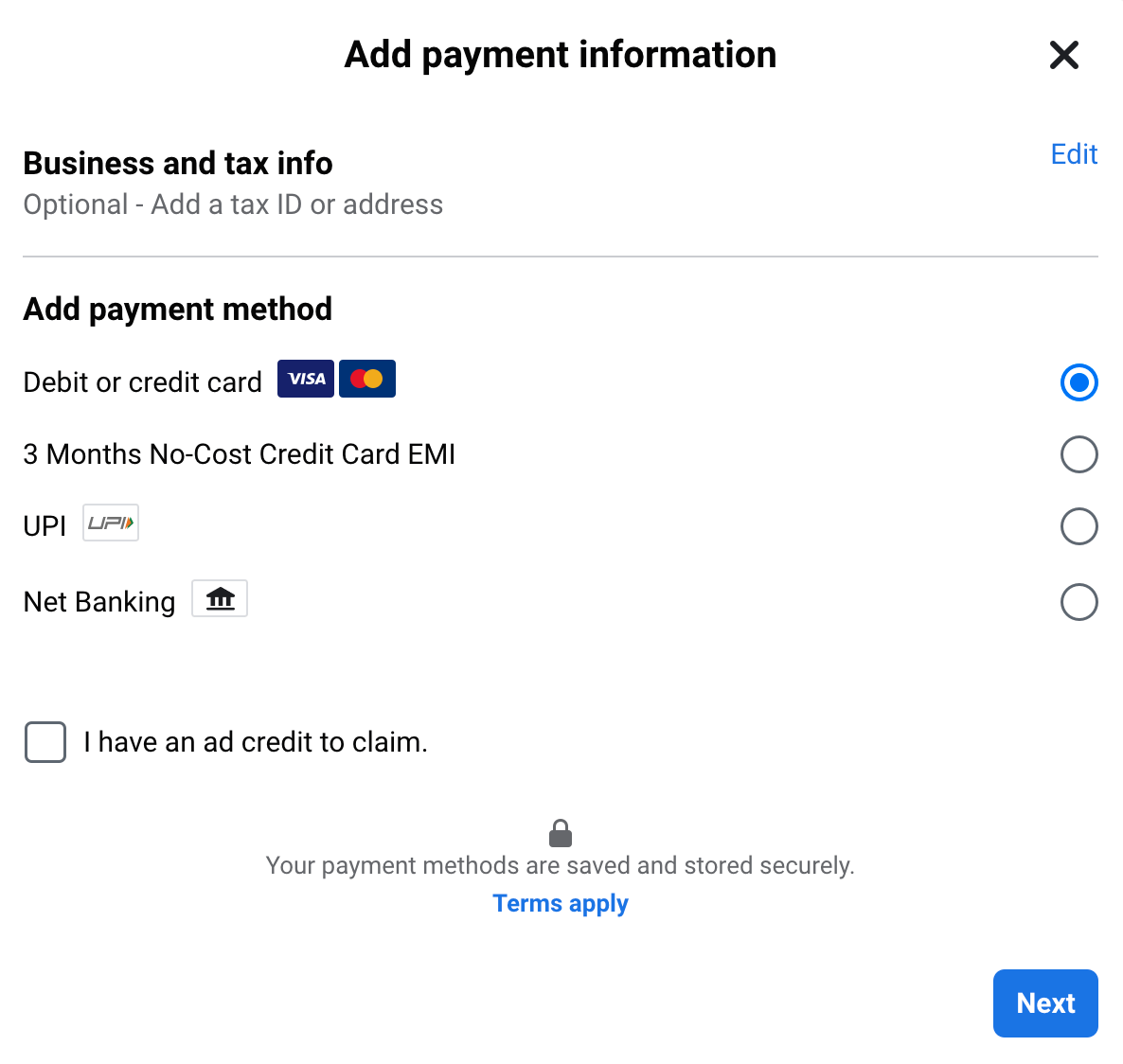
⚠ Note: The options you see might vary depending on your location and currency. If you want to see Meta’s accepted modes of payment for your country, check this help article, kindly refering to https://www.facebook.com/business/help/212763688755026?id=160022731342707
4: Meta Pixel (not necessary, but highly recommended)
Meta Pixel isn’t a prerequisite to opening and running your Ad Manager account. You can operate without it, too. But Meta Pixel is critical to track your ad performance metrics accurately. I’d recommend setting it up while creating your Facebook Ads account itself to get it out of the way and track your ROI with precision.
But what is Meta Pixel (formerly known as Facebook Pixel)? It’s a piece of code for your company website that enables you to build and optimize targeted audiences for your Facebook advertising. Suppose a prospective buyer came to your website and left something in their cart. The Meta Pixel technology will retarget this customer on Facebook and/or Instagram to finish their purchase.
![]()
The key function of Meta Pixel is to help you understand how people interact with your ads and what actions they take on your website. It can also enable better ad targeting of your prospective buyers.
Here’s how you install Meta Pixel on your Facebook Ads Manager:
1. Go to the Meta Events Manager.
2. Click “Connect Data” and choose your “Web” in the Data Source to connect your website.
3. Enter a name for your Pixel and see if your website is set up using Meta’s partner platforms. If yes, you can install Meta Pixel without editing the code on your website.
4. Install the Pixel code manually (or send instructions to a developer) if your website isn’t in Meta’s partner platforms.
![]()
The data you collect via Meta Pixel also enables the creation of custom and lookalike audiences for audience targeting. For example, if you want to target a similar audience to your website visitors for your Facebook ads, you can do so using Meta Pixel data.
How to create and use Facebook Ads Manager in 7 steps
Facebook Ads Manager is…complicated (to say the least). When you don’t know your way around, it can be so overwhelming that you ponder ditching your paid marketing efforts altogether. But it doesn't have to be so daunting — not with these step-by-step instructions.
Step 1: Link your Facebook Page to your Meta Business Suite (formerly Facebook Business Manager)
Go to the Meta Business Suite website and log in with your personal Facebook account. The Meta Business Suite is the updated Facebook Business Manager.
Next, go to “Business Settings” and click “Pages” to link your Facebook page. You will get the option to add an existing Facebook Page, create a new one, or request access to someone else’s Page.
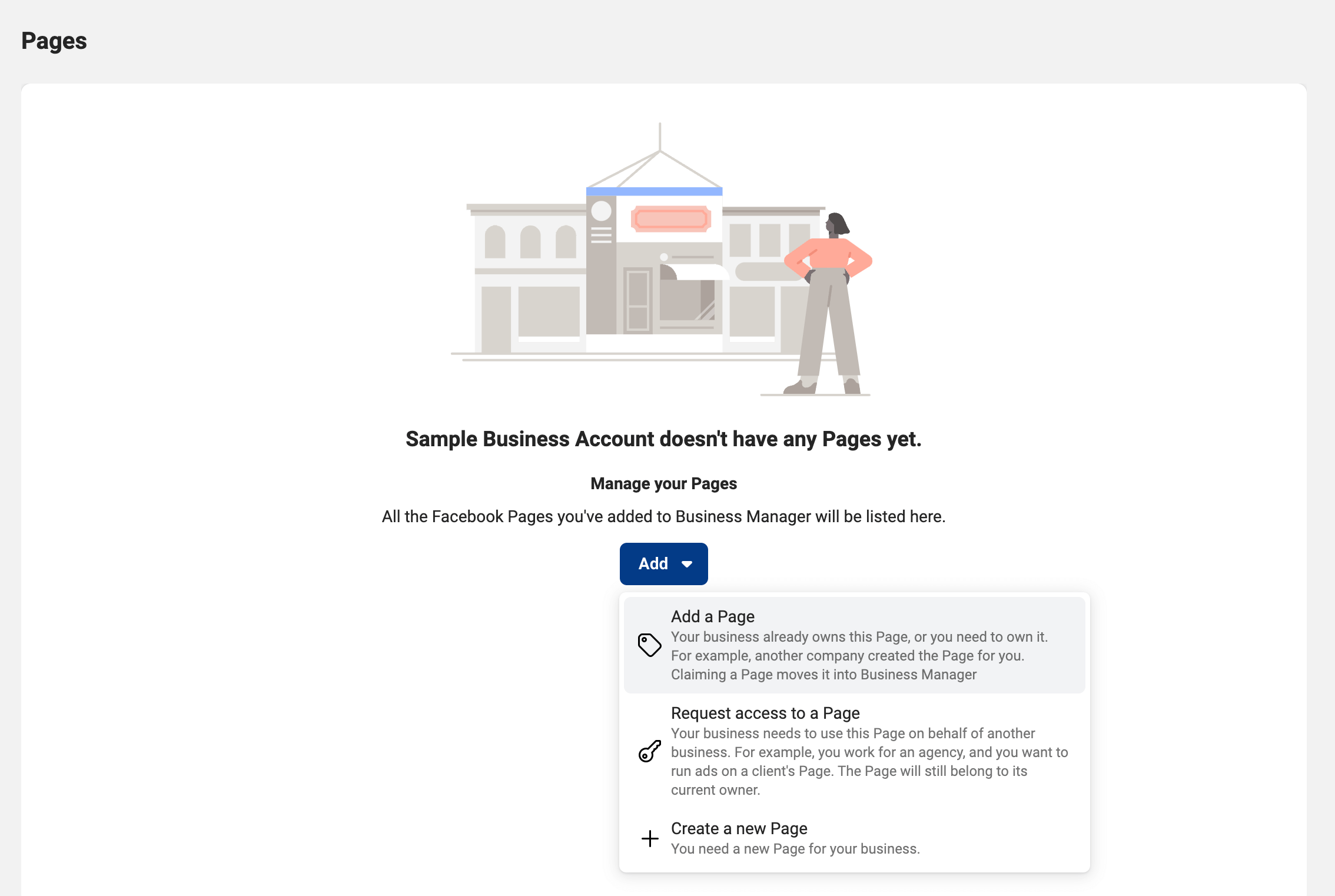
The third option only applies if you’re a part of a team and someone else has admin access.
Step 2: Create a Facebook Ad Account (or claim an existing one)
Meta Business Suite has a variety of tools to manage your marketing activities, while your Ad Manager has a specialized job of helping you run Facebook Ads.
You can create your business manager account by going to “Business Settings” in Meta Business Suite and finding the “Ad account” option under the “Accounts” header. Like with Facebook Pages, you can create a new Ad account from scratch, claim an existing one, or request access from another admin.

The next step depends on the option you choose. For instance, in “Add an ad account,” you must enter your Ad account’s ID; in “Create a new ad account,” you need to give your Ad account a name and enter your time zone and local currency.
Step 3: Add your team (if you have one) to your Facebook Ad account
If you’re working with a team, add them by going to “Ad account settings” in your Ad Manager and finding “Ad account roles.”
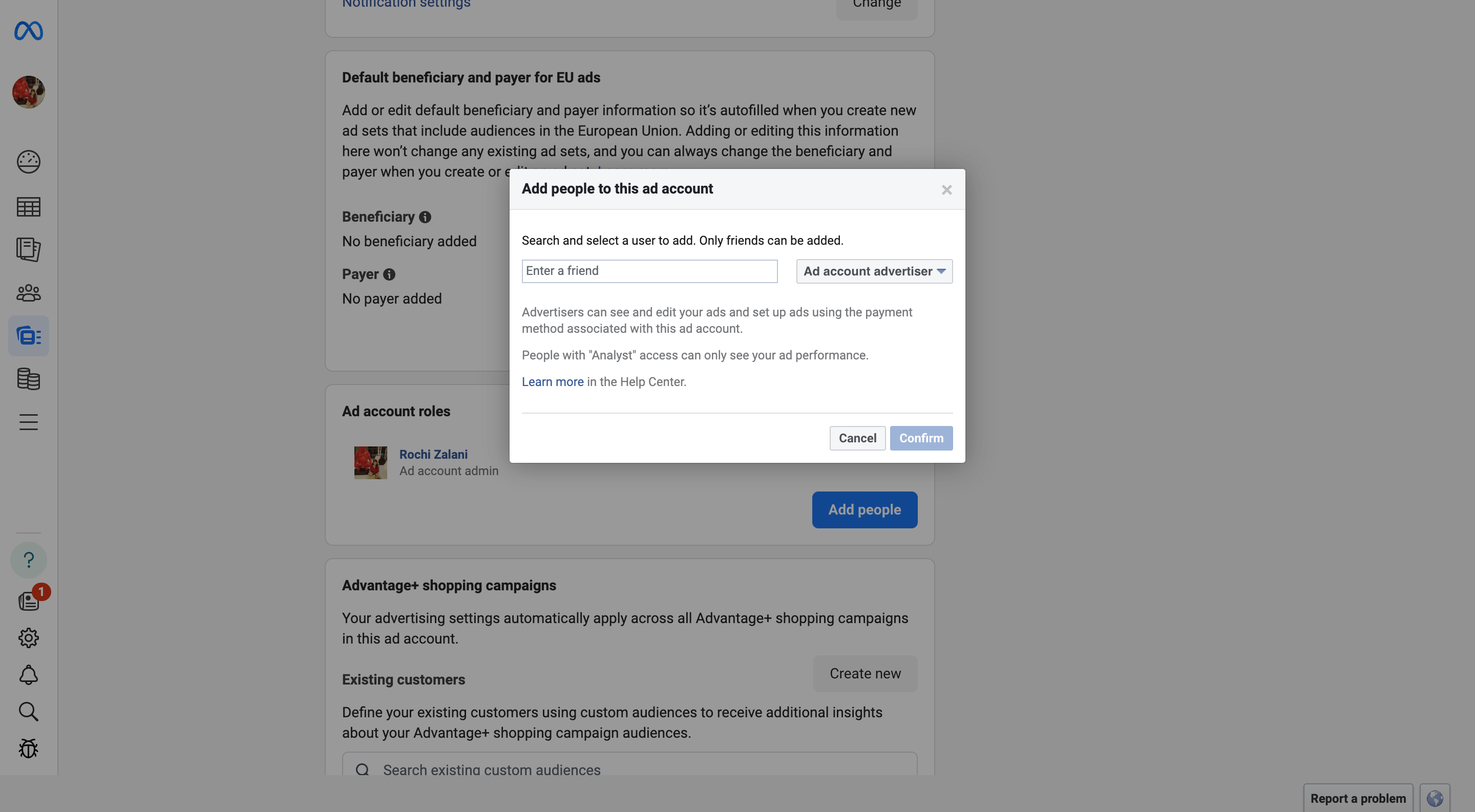
You can give three kinds of access (by clicking on the drop-down button):
Admins can do everything you can do — from creating ads & editing payment methods to modifying existing admin permissions.
Advertisers can create and edit ads and access reports but can’t modify your payment info or existing permissions.
Analysts can only view ads and access ad performance reports.
Meta has an excellent table to help you visualize these permissions and decide who in your team is suited to what role.

Step 4: Design a campaign
Before we move to the next step, you need to learn about Meta’s three levels to your Ad Account. The first level is the Campaign, the second is the Ad Set(s), and the third is your Ad.
Campaign is what kind of campaign you’re going to run. It’s the bigger picture.
Ad Sets is who you’re targeting and how often you’re going to advertise to them.
Ad is the thing your prospective buyers actually see.


We’ll cover each level and what goes inside each of them in detail.
This step is about the Campaign level. In this stage, you have to choose an “objective” for your ad — which is essentially deciding what kind of action you want people to take after seeing your ad.
Let’s say your goal with Facebook Ads is improving website traffic. In this case, your objective is to increase the number of clicks to your ad so more people are redirected to your website.
You can choose from six objectives:
1. Awareness
2. Traffic
3. Engagement
4. Leads
5. App promotion
6. Sales
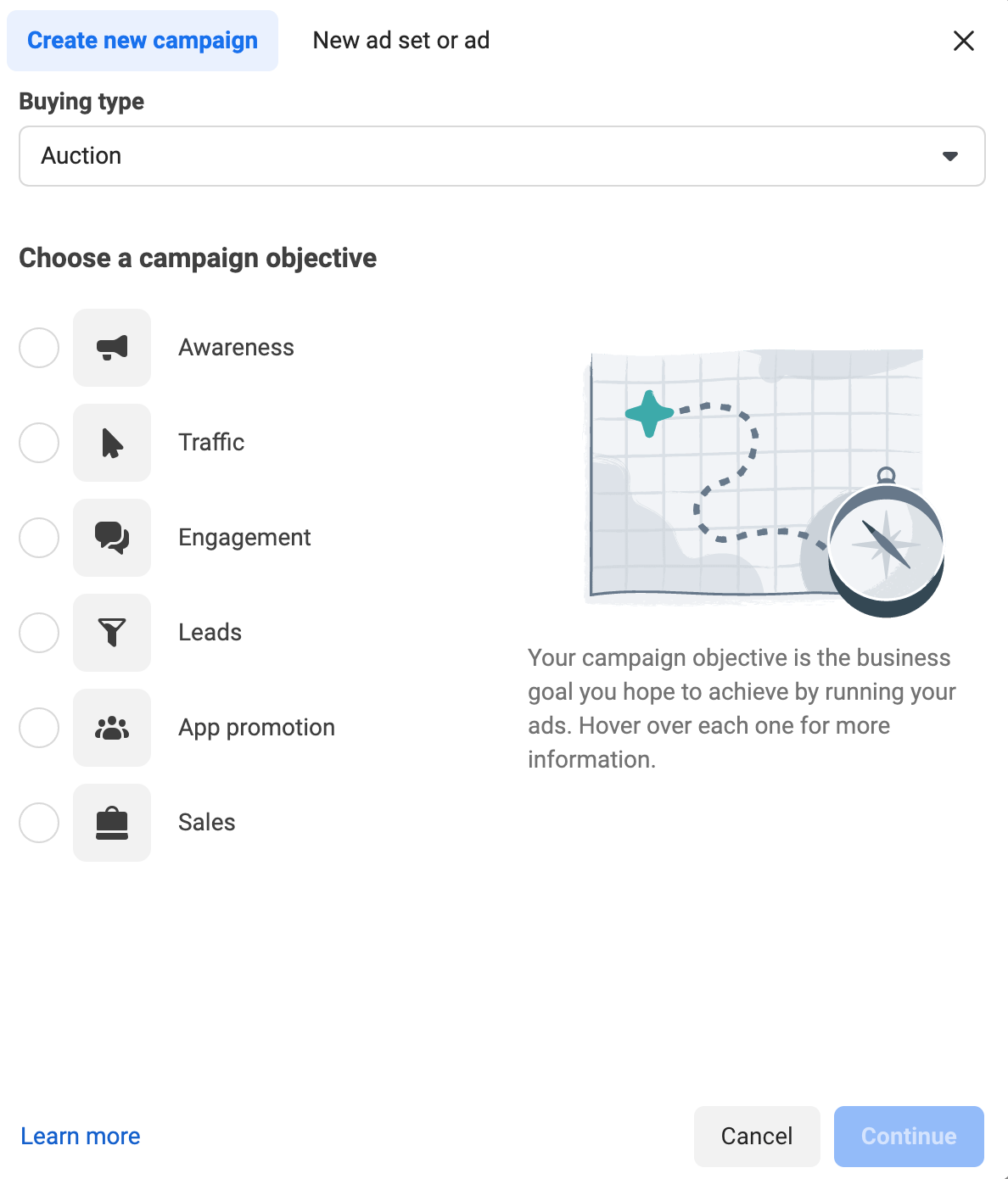
- Here’s a quick step-by-step instruction on how to create a new campaign:
1. Click on the “Create” button in the “Campaign” tab on your Facebook Ads Manager.
2. Choose a campaign objective.
3. Give your campaign a name.
4. Set a campaign spending limit if you’re worried about turning on ads and forgetting them (if not, skip this step).
5. Toggle on the A/B test button if you want to experiment with different images, text, and audiences for your ad.
6. Turn on the advantage campaign budget and set a campaign budget.
I know you have many questions about which option to choose, which to ignore, and why. Here are the answers to all of them:
- Auction vs. Reservation
Before you choose your campaign objective, the Facebook Ads Manager will ask you to choose between two buying types: Auction and Reservation.
Auction shows your ad to people who are more likely to be interested in it. Reservation lets you plan your campaigns in advance with a fixed cost per impression (CPM).
In most cases, you should choose Auction because it offers more flexibility, choice, and efficiency. Reservation might promise predictable returns, but you can’t place your ad in various places like Facebook Messenger. But choose Reservations in campaigns where you’re looking for more certainty and are less interested in capitalizing on your competitive advantage.
- Which campaign objective should you choose?
The one that most closely aligns with your business goals.
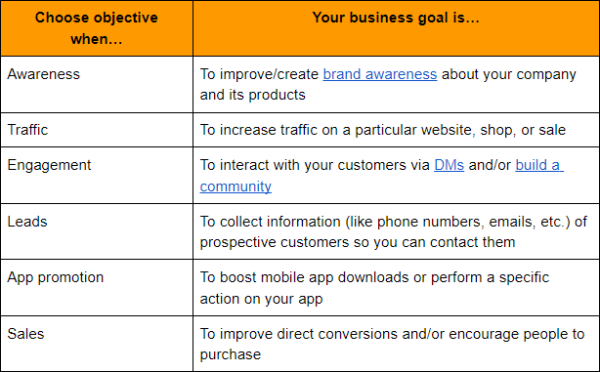
The campaign objective you choose will also determine the call-to-action (CTA) buttons for your ads. For example, if your business goal is to improve signups for your newsletter > your objective is lead generation > so your CTA will be “Sign up now.”
Think: What is my business goal with running these Facebook Ads? And choose your campaign objective accordingly.
- Should you use Meta’s preset recommended settings?
If you’re a beginner, it can’t hurt. Meta applies its best practices to streamline your campaign. Everything is always modifiable as you move along the process.
If you’re at an intermediate or advanced stage of your Facebook Ads Manager journey, you will have more control over the campaign settings if you do everything manually.
- What are special ad categories?
If your ads are related to credit, employment, housing, social issues, elections, or politics, you need to let Facebook know upfront.

Depending on your location, targeting and advertising options may be limited or unavailable for these special ad categories. But you need to fill this out honestly or risk blocking your Facebook Ad account entirely.
- What is the advantage campaign budget, and why should you toggle it on?
The advantage campaign budget is a way of optimizing your ad sets based on performance. Let’s say your campaign A has two ad sets, and one performs significantly better than the other. If you have toggled on your advantage campaign budget, Meta will notice this and allocate more funds to the better-performing ad set automatically.
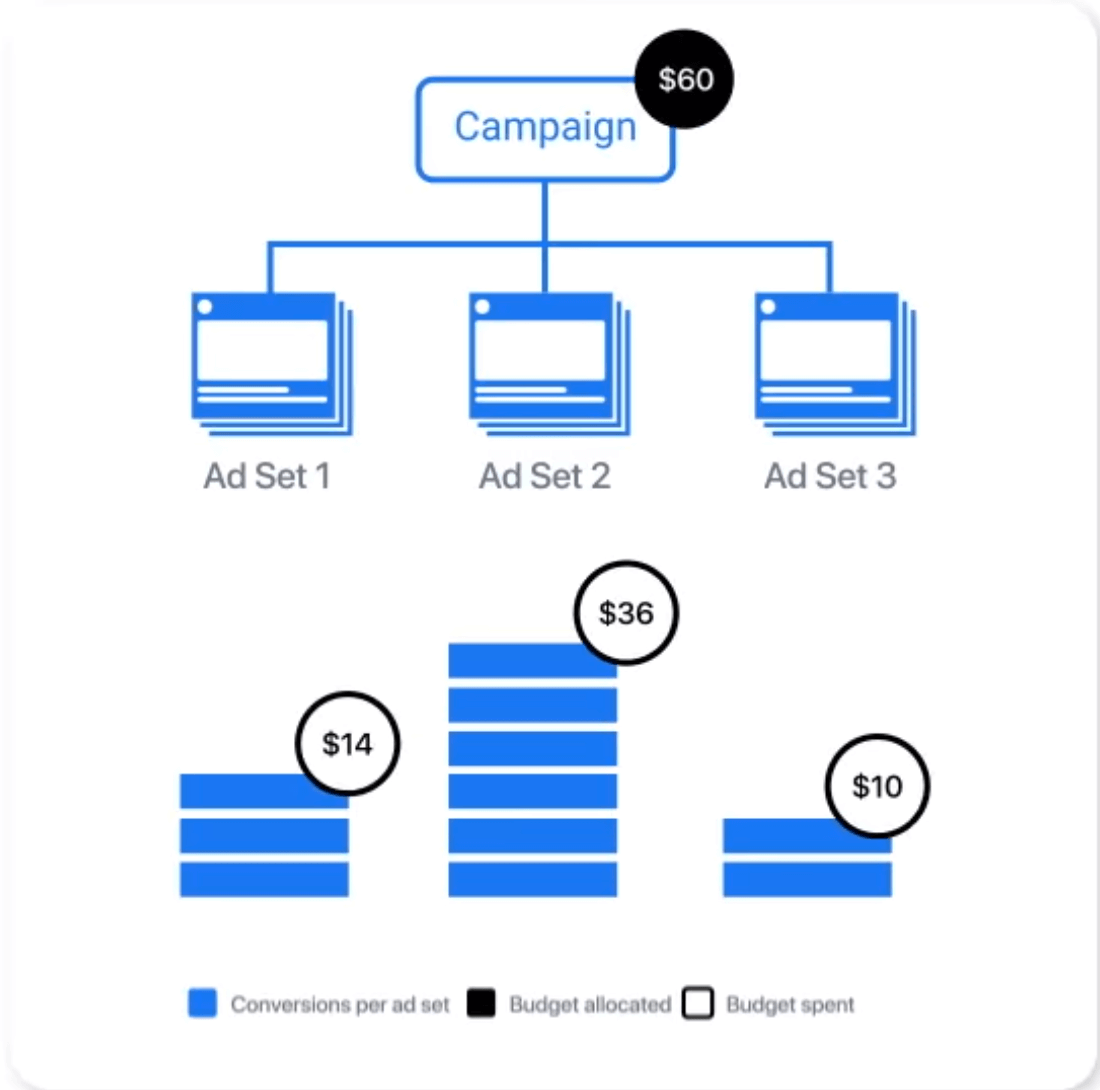
Instead of having a set budget for each of your ad sets, you have an overarching campaign budget with flexibility — which is distributed in real-time to your most high-performing ad sets.
Since this optimizes your ad budget for the best results, I recommend turning it on. But if you plan to analyze the performance of two ad sets, turn it off. Why? Because you won’t be able to track individual set performance with the advantage campaign budget.
For example, suppose you sell skincare and want to run one ad set about Serum A and another about Serum B to see which sells better. In that case, using the advantage campaign budget is futile because it’s best when you only want to analyze performance at the campaign level. Advantage campaign budgets are also best turned off when you’re targeting two different audiences for your ad sets.
- How much ad budget should you allocate to your Facebook ads?
You can set a budget spending limit and a daily or lifetime budget in advantage campaign budget. But how much money should you dedicate to Facebook Ad Manager? Choose a number that’s small enough to afford a calculative risk; but large enough that you’re eager to check the performance of your ads and improve the results.
Now that you’re done creating a campaign, let’s start building ad sets.
Step 5: Create one (or multiple) ad sets
Within the ad sets, take the following steps:
1. Choose your conversion location — this is the type of CTA you want to run with.
2. Choose your performance goal.
3. Determine your budget and ad schedule.
4. Decide the audience you want to reach with your ads.
5. Choose where you want to place your ads.
In the first and second substep, the options you see within your ad sets will depend on your chosen campaign objective. For example, in the sales objective, you’ll see the places you want to redirect your ad audience to — your website, app, etc. In the engagement campaign objective, your conversion location will be where you want to drive engagement — your Facebook Page, Messenger, etc.

The next substeps are similar regardless of your campaign objectives.
· Set your budget and ad schedule — start date (and end date if you need) and a daily/lifetime budget.
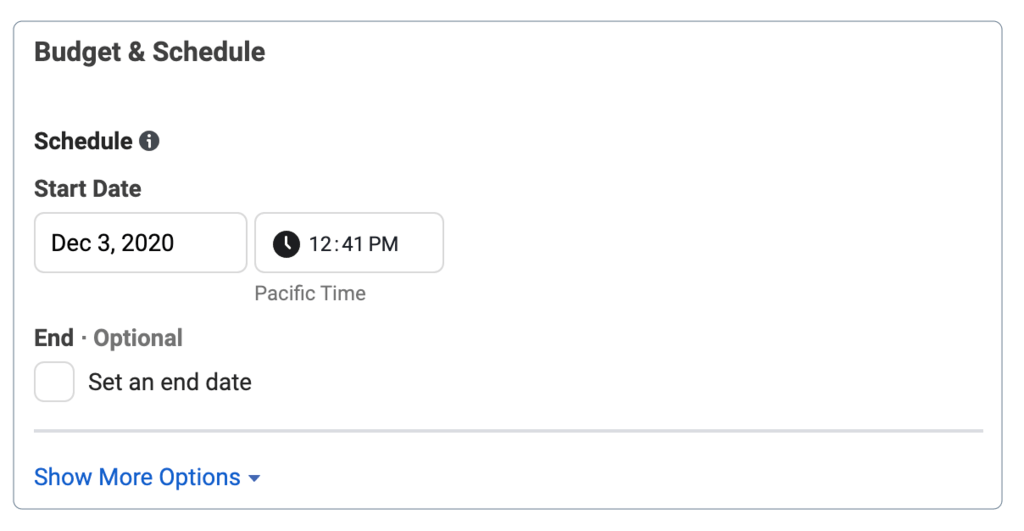
· Decide the audience you want to target for your ads. You can choose custom locations, demographics, interests, and behaviors of the people you want to reach.
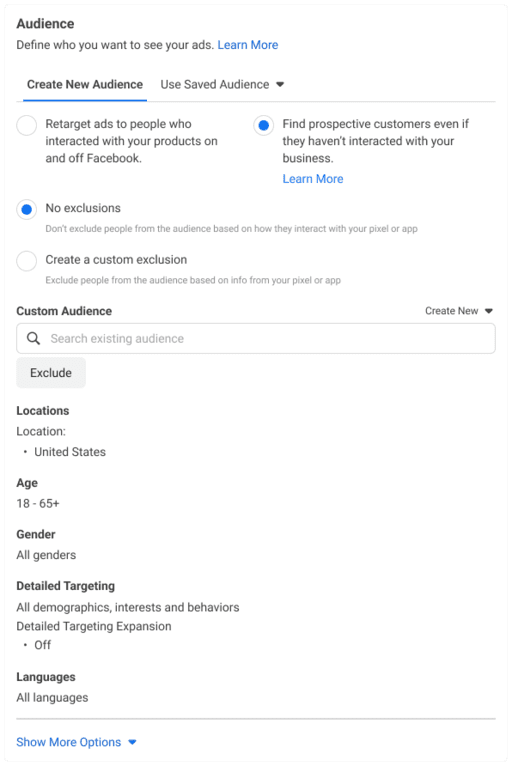
⚡ A pro-tip: Keep your targeted audience as broad as possible to make it easier for Meta to find and engage your prospective buyers. Meta helps you verify if your audience definition (and the reach of your audience) is broad enough at the right-hand side of your ad sets.

Like with campaign objectives, you get the option to choose “Advantage+placements” to let Meta determine where your ads will perform best (among in-feed, Stories, videos, etc.) using its machine learning. Or you can select “Manual placements” to choose this on your own.
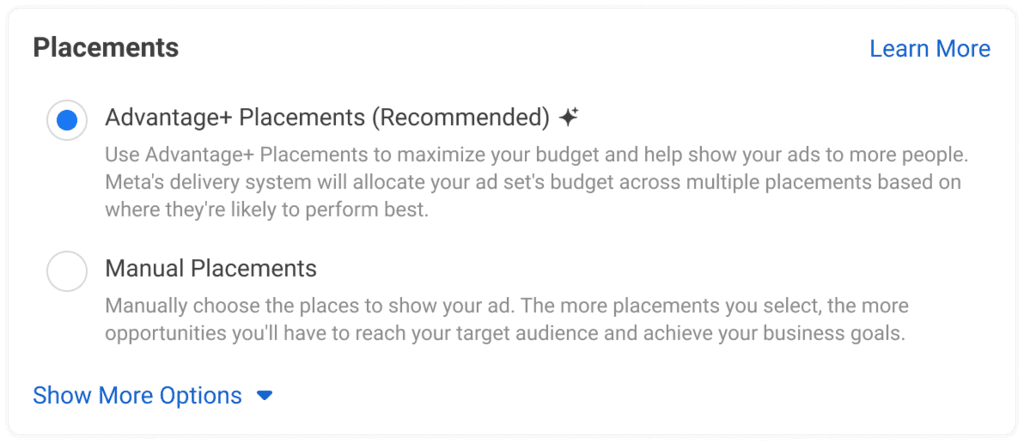
In audiences, you can also select custom, lookalike, and saved audiences separately. Click “Audiences” in the left-hand column in your Facebook Ads Manager, and you’ll find the option.
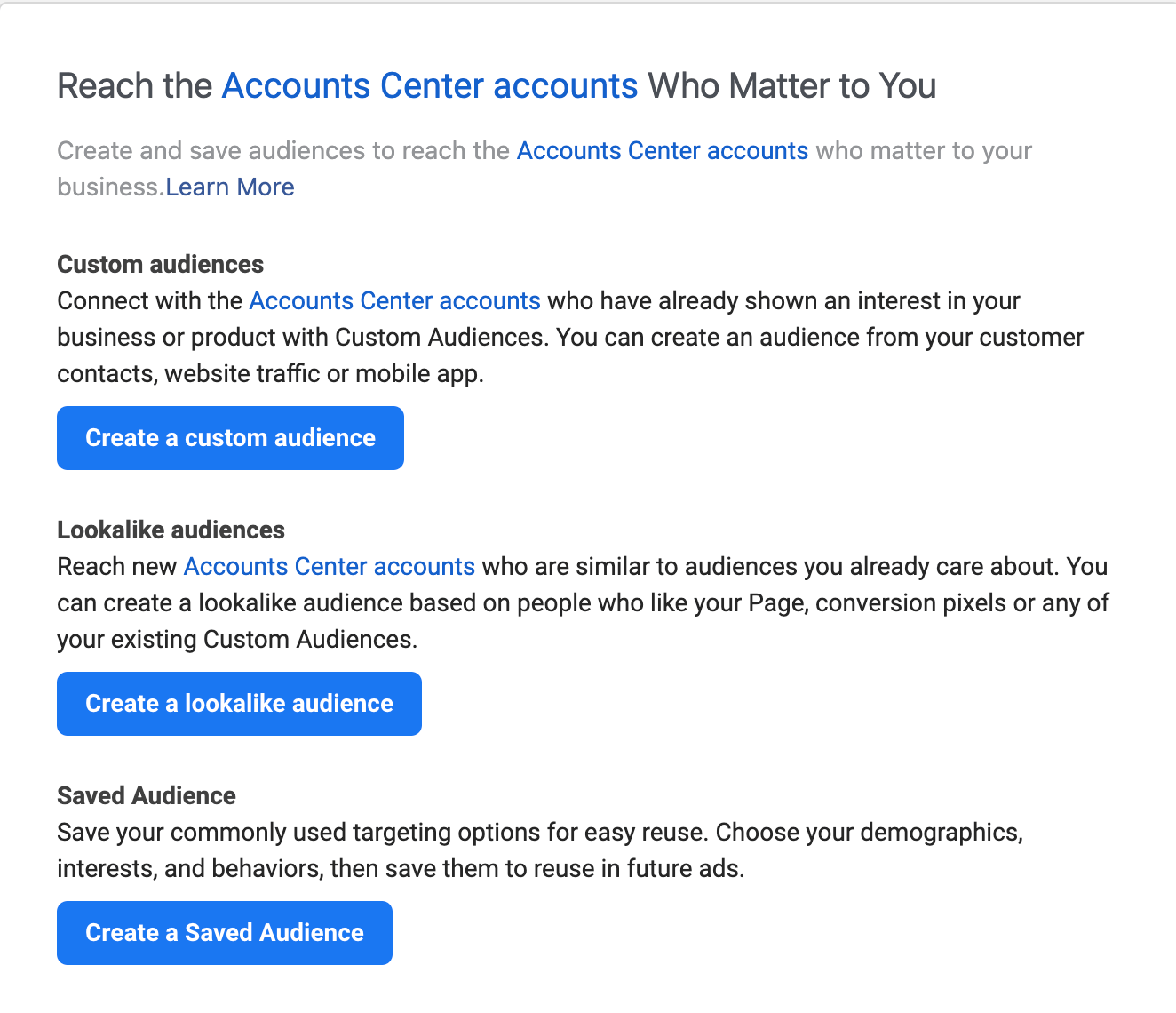
· Custom audiences are prospective buyers who have already expressed interest in your product by visiting your website, signing up for your newsletter, etc.
· Lookalike audiences are potential customers who behave similarly to your current customers. Your Meta Pixel is a great data source for Facebook to determine these people. You can also choose people who engage with your Facebook Page.
· Saved audiences become available once you’ve run a few ads. You can reuse your past ads' demographics, interests, and behaviors.
You can create multiple ad sets within one campaign. For example, let’s say you want to run a paid marketing campaign about your Black Friday Sale via Facebook Ads Manager. One ad set can display your products at a discounted price, and another can share a specific coupon code. Both ad sets fall under the same campaign, but you’d like to run them separately since they have different marketing messaging.
Step 6: Build your ad
The final step of launching your campaign via Facebook Ads Manager is building your ad. After you’ve made an ad set, here’s how to create your Facebook Ad:
1. Give your ad a name.
2. Turn on the partnership label if you’re practicing influencer marketing and collaborating with a creator for your Facebook Ad. Meta will give you an option to enter the partnership ad code shared by the creator.
3. Set up your ad — choose from an existing post on your Facebook Page or upload a fresh creative asset(s). Choose the format of your ad — single image, video, or carousel post.
4. Upload your ad creatives — the images and/or video, the headline, the primary text, and the description.
5. Choose what happens after people click your ad in “Destination” — they’re redirected to your website, they sign up for your newsletter, their app store opens to install your app, etc.
6. Set up ways to track how people respond to your ads via integrating your website (through Meta Pixel) or entering your UTM parameter.
- Should you choose your ad creative from an existing post or create a new one?
If you’re marketing for a specific campaign — like a sale or a 20 percent discount — it’s best to create new ad creatives from scratch for your Facebook Ad Manager. But if it’s a general ad, it doesn’t hurt to repurpose the images or videos you already have.
The visuals of your ads are critical to stop the scroll. They should pop and be interesting enough for someone to stop and read your message. Focus on:
· Using the recommended ratio for your ad placement depending on your chosen content format(s). Once you add your creative, Facebook Ads Manager gives you an ad preview to double-check if all your visuals look aesthetic and aligned in all types of posts. If you notice any particular ad format looks off, replace it with another image.

· Showing real people using your product. Seeing similar people helps us visualize purchasing the product. Keep the people in your ads as close to your target audience as possible. For example, the beauty company, Saie regularly uses real faces (and even videos!) in its Facebook Ads.
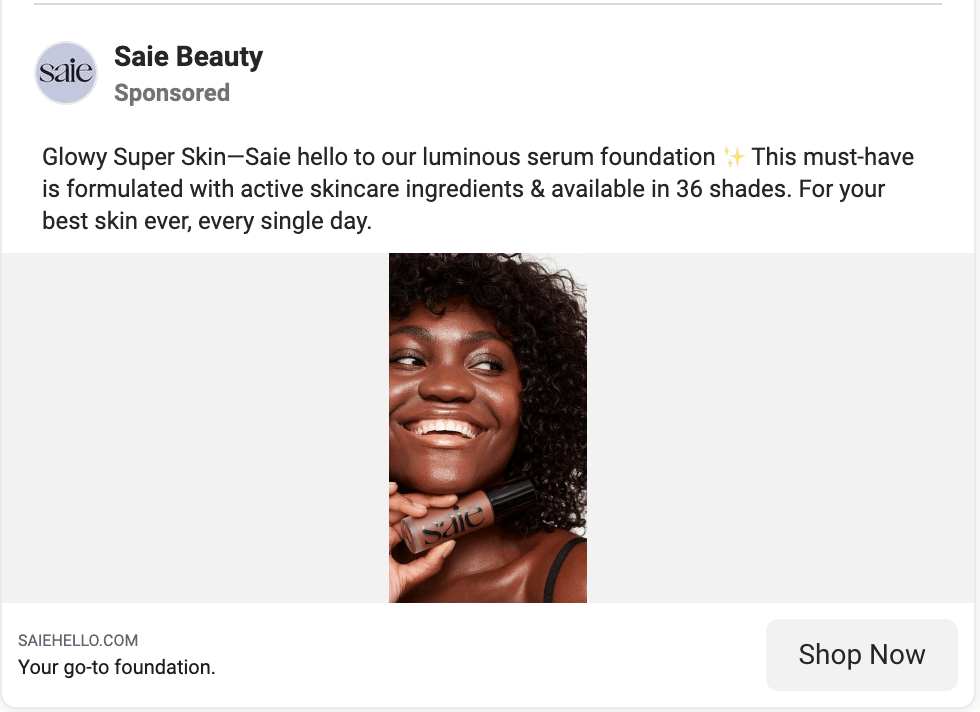
· Employing text overlays to your advantage. If you write text above your visuals, ensure the font is readable and your message is crystal clear. For instance, STRIP Makeup used a clear 50 percent off message on its Facebook Ad.
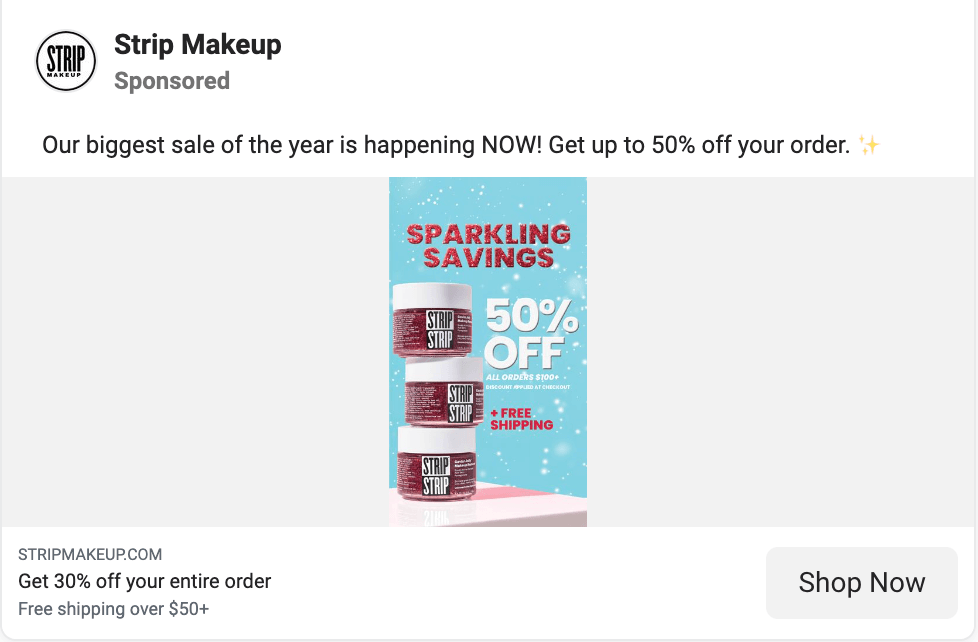
- What type of media format should you use to create Facebook Ads?
You can create images, videos, and carousels on your Facebook Ads. There’s no one “best” format — test and see what gets you the most ROI. Different campaigns also might need different content types depending on their goal. For example, let’s say you’re a skincare company. If you want to market a product that’s often used incorrectly, a video ad is better than a static image ad. But if you want to showcase a before-after advertisement for your product, an image or carousel is superior to video.
It’s more important to align your ad copy with your visual asset and CTA than fussing over which media format to use.
- How to write a compelling ad copy?
Your copy can make or break your ad. It includes the text that goes above your ad and within your ad.
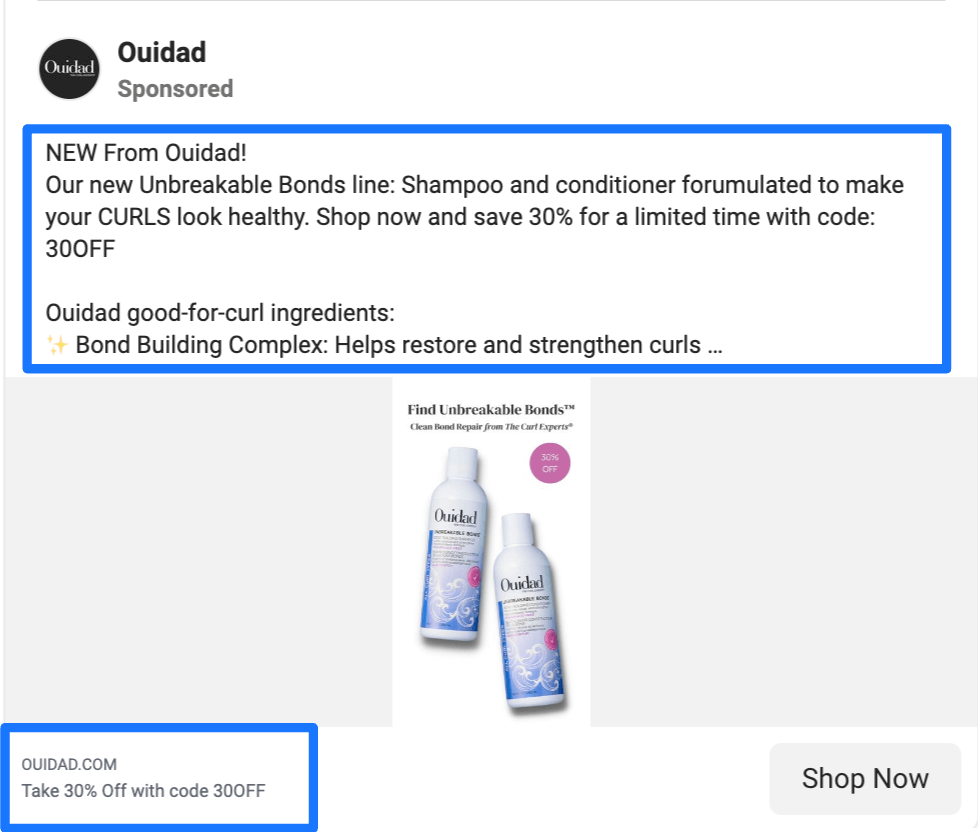
Your ad copy should:
· Be crystal clear: People reading ads don’t have the time to decipher clever messaging. Make your ad messaging as easy to understand as possible.
· Have a offer: Give your audience a compelling reason to click on your call-to-action button. An offer — like a coupon code, a giveaway, or a sale — makes it more likely that people will check out your business. Answer, “What’s in it for me?” for your audience.
· Highlight the benefits of your product: Give details about your product that’d interest prospective buyers. What results can they expect? Any mind-blowing statistic or case study can do wonders.
· Start with a hook: People have developed a habit of scrolling past the banner ads. Your first sentence should be interesting enough to stop them from their voluntary blindfold to social media ads. Say something that speaks directly to your audience and also uses the curiosity gap so they itch to read more.
Excellent copywriting is not only excellent for writing social media captions that get more engagement, but also ads that drive better results. This ad by Curlsmith is the perfect example of how to nail your ad copy — it begins with a problem statement that piques interest, puts a spotlight on its new product & its benefits, and has a cheeky description. (Plus: Real people in the video ad!).
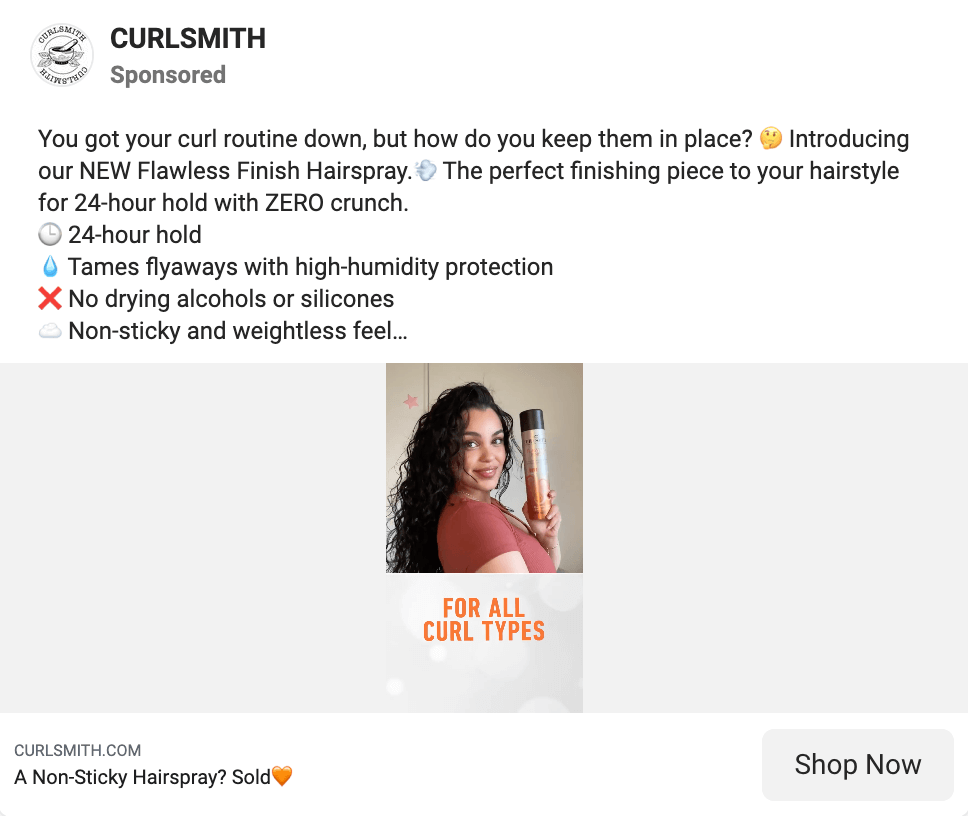
Meta has an “Advantage+creative option,” where it experiments with optimizing your creative — it might add relevant comments to your ads, chime it in with some music, display the primary text in the headline, etc. It’ll also decide on automatic placements of your ad using its machine learning. There’s no harm in checking if Meta’s optimization produces better results. But if you want control over how your ad creatives look in the wild, it’s best to keep this option turned off.
Step 7: Track your results
Facebook Ads Manager gives you the scoop on how your ads are performing. It’s useful to keep an eye on these metrics to check whether they align with your overall social media goals.
In Facebook Ads Manager, you can see performance data in two places: the Overview tab and the Ads Reporting tab. The former is to see, filter, and analyze data however you need. The latter is to make custom reports.
- Data in Facebook Ads Manager’s Overview tab
You get the basic metrics of reach, impressions, link clicks, cost per thousand impressions (CPM), click through rates, etc., for all your campaigns in a table format right next to your campaign name. You can customize the time period (for which you want to see the data) in the upper right-hand corner.
![]()
Apart from the basics, the Overview tab lets you filter data using search & filter, columns, and breakdowns.
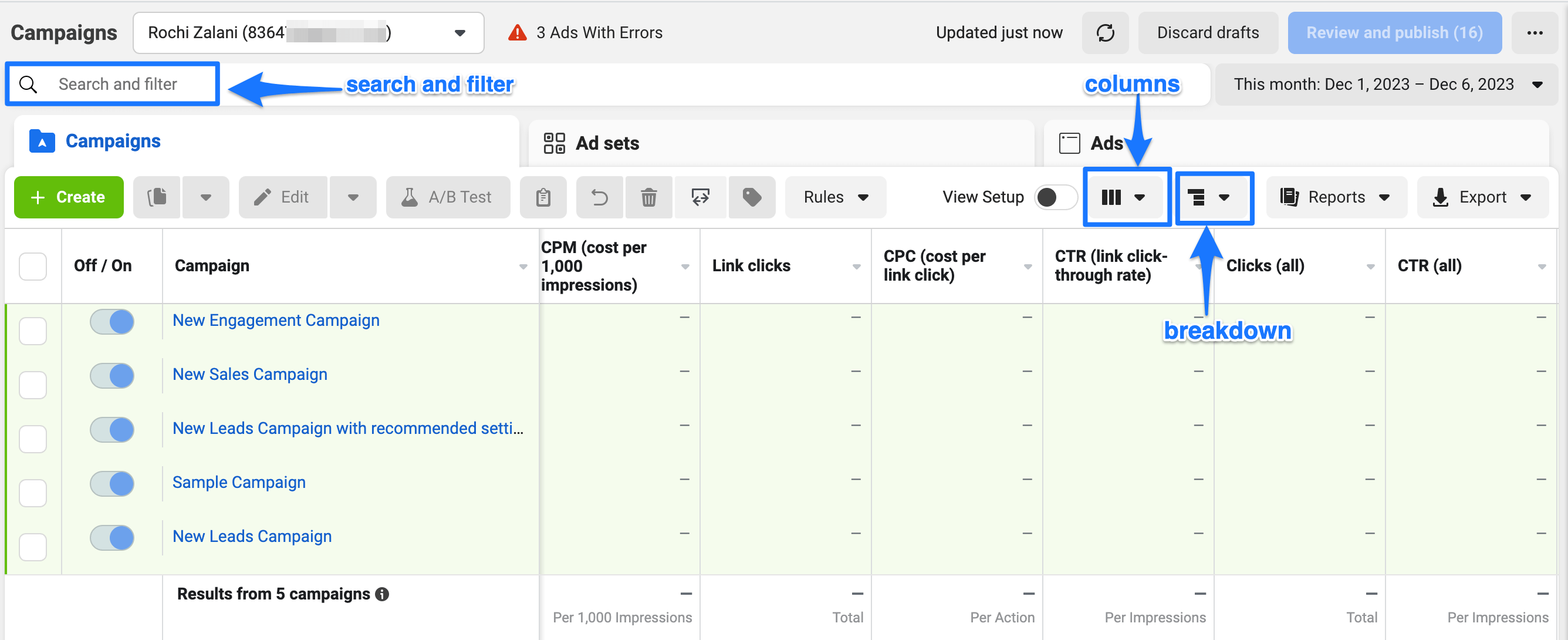
In search & filter, you can filter for various metrics. For example, ads with App promotion as its campaign objective or ads with more than 1,000 impressions. Think of it as shopping on an ecommerce website. You apply filters for gender, size, preferences, and whatever else you need to narrow down your results.
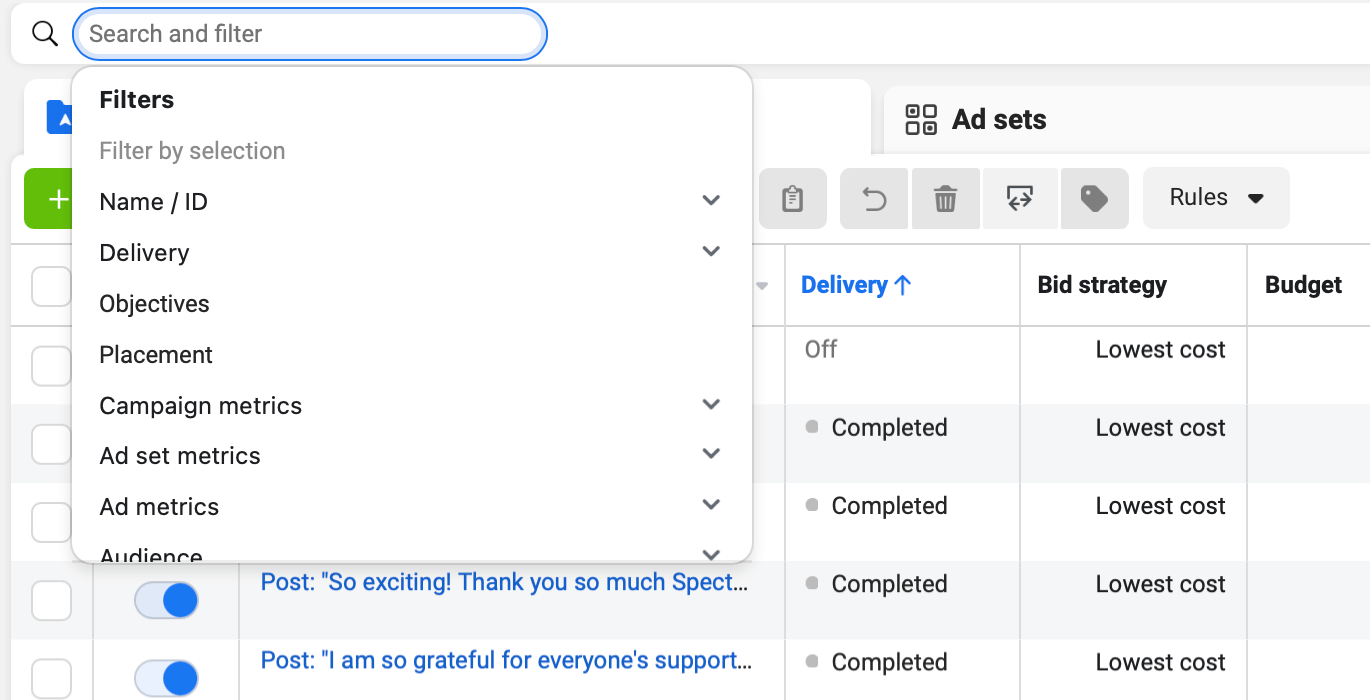
In columns, you can filter your tab based on certain presets provided by Facebook. For example, if you filter for the column “Performance,” the table will display reach, cost per result, impressions, the amount spent, etc. But if you filter for the column preset of “Engagement,” the post’s metrics will change to displaying page engagement, post reactions, post comments, etc.
You can also create your custom presets and customize the columns of existing presets.
In breakdowns, you can get even more granular with your data and filter it by time, demographics, geography, delivery, and action. Like with columns, Facebook Ads Manager shows you some popular breakdowns at the top, but you can always apply a custom breakdown filter if you need to.
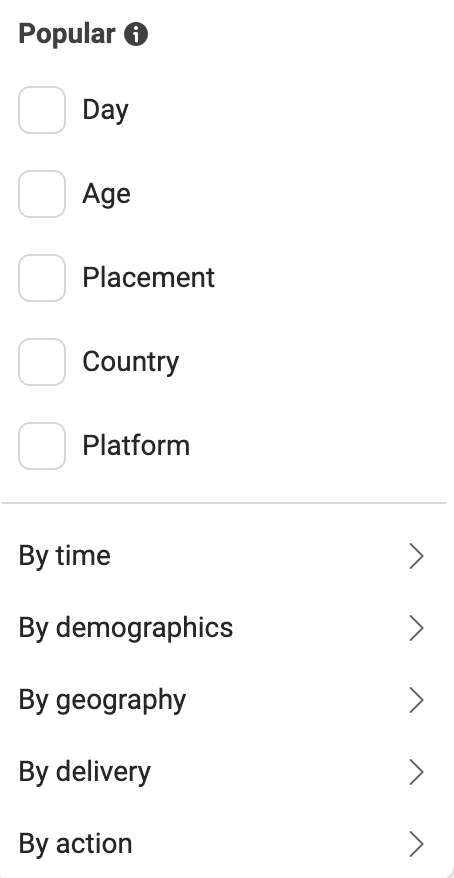
Facebook Ads Manager often bombards you with its reporting abilities — which can seem daunting. It’s best to care about a few metrics the most and focus on them to reduce the overwhelm and get insight into what matters most. Think of the metrics closest to your business goals and track them religiously. As you gain more competence, you can layer your analysis with the other metrics Facebook Ads Manager provides.
- Data in Facebook Ad Manager’s Ad Reporting feature
To open the Ad Reporting dashboard:
1. Go to “Ads reporting” on the left-hand side of your Facebook Ads Manager. Or click on “Reports” in the Account Overview tab and click on “Create new report.”
2. Give your report a name.
3. Customize the date you want to see the data for from the left-hand side.
4. Apply the search filters at the top.
5. Apply the breakdown and metrics filter on the right-hand side.
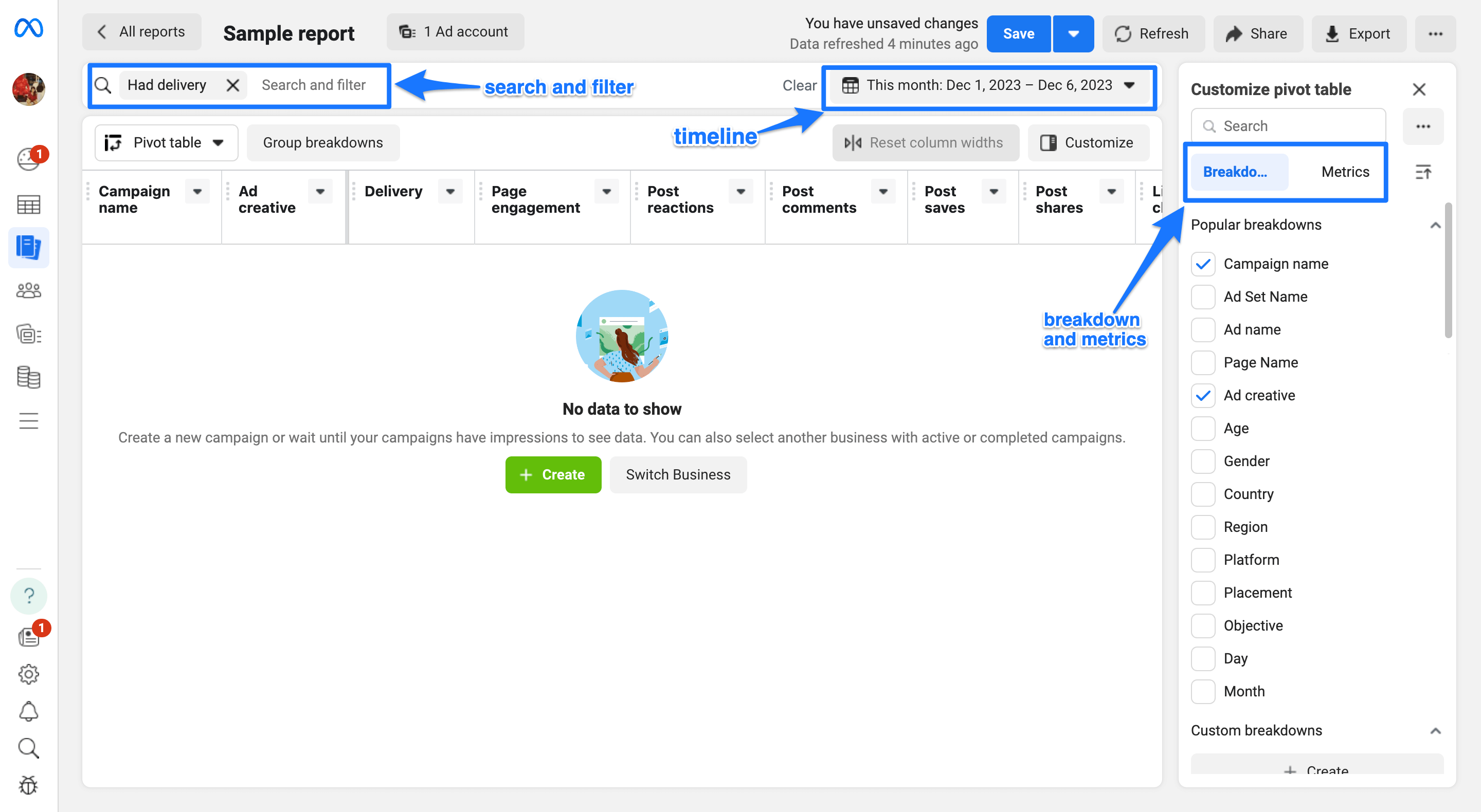
It’s similar to the Overview tab, except here, you can export your table as a CSV file or share a link to the report. If you have to create a report on a recurring basis, there’s also the option to duplicate this report — you can change the timeline and whip up a new report in seconds.
- An A+ social media strategy goes beyond Facebook Ads Manager
Paid marketing is great, but it’s not enough. An effective social media strategy includes both organic and paid marketing efforts. While you’re learning the ins and outs of Facebook Ad Manager, don’t forget to regularly show up on your Facebook Page authentically by posting relevant content and interacting with your audience.
RochiZalani
Writer for Saas
FAQ:
Q: Can I create new ads using the Meta Ads Manager app?
A: Currently, the app focuses on managing existing campaigns rather than creating new ones.
Q: Is it possible to schedule posts through the app?
A: The main functionality of the app revolves around ad campaign management; post scheduling is not a feature at the moment.
- Version443.0.0.59.109
- UpdateSep 04, 2025
- DeveloperMeta Platforms, Inc.
- CategoryBusiness
- Requires AndroidAndroid 9+
- Downloads20M+
- Package Namecom.facebook.adsmanager
- Signature03c4b9a35b3a9189048ec25ab6ea7bf9
- Available on
- ReportFlag as inappropriate
-
NameSizeDownload
-
34.13 MB
-
33.95 MB
-
33.82 MB


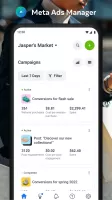

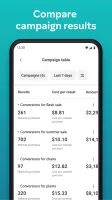
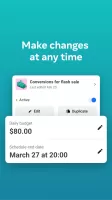
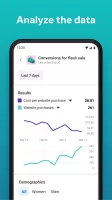
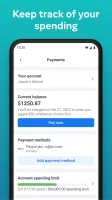
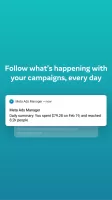
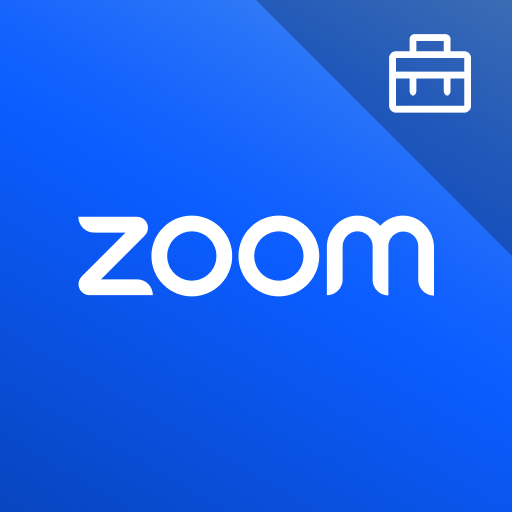








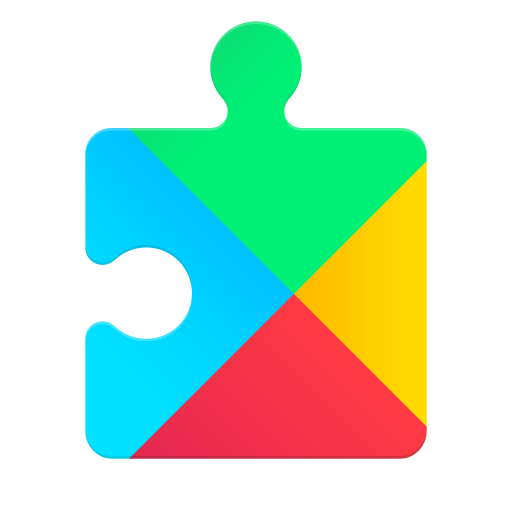

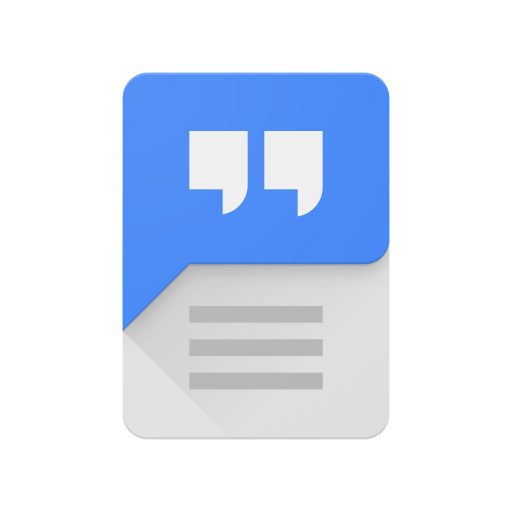





easy to edit and adjust
simplified ads experience
popup appears on a regular basis
clunky and difficult to navigate